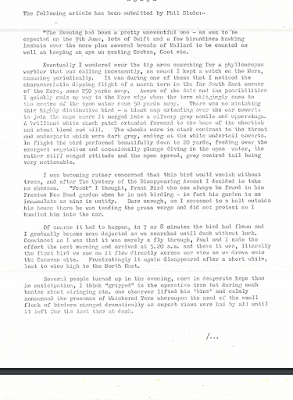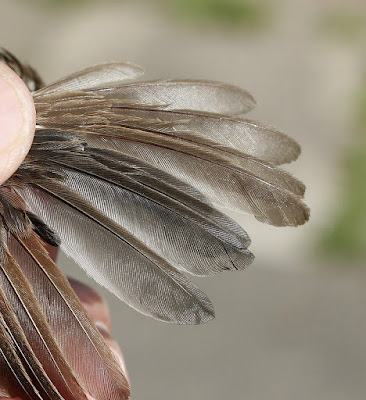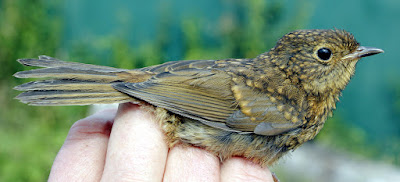Surfing as one might on a rather dull morning and on the website of Fylde Bird Club, Lancashire, I stumbled across a page full of their old Newsletters. The newsletters, now in PDF form and dated from 1983 to 2017 provide a source of historic local information to both members and non-members alike.
Inside June/July 1983 Number 4, was a piece submitted by one Phil Slade about the finding of a rare bird on a June evening in 1983.
In those days I was a member of the club, one of ten or twelve founder members who set up the club as a way of developing interest in the local site of Marton Mere, a Site of Special Scientific Interest (SSSI).
In the early eighties the mere was threatened with development by interests wholly unsympathetic to wildlife. Despite the SSSI the mere was a free-for-all to many varied interests with little concern for its status as an SSSI. Club members took on an evening rota to try and deter the many undesirable elements from destroying the site’s value – birds’ egg thieves, scrambler bikes, unruly dogs with and unruly owners, charging horses topped by inconsiderate riders. You name it, Marton Mere had the lot.
After an encounter one evening with a muddy dog and an unpleasant owner I recall taking a different route to escape the abuse.
Read on ….
Fylde Bird Club June/July 1983
Fylde Bird Club June/July 1983
Fylde Bird Club June/July 1983
Apologies about the quality of the images above. This was pre-digital and pre-mobile phones. Remember that?
Whiskered Tern
Whiskered Tern
Also, from Page One above: "Information regarding breeding birds in the Fylde has been somewhat sparse, so strengths and weaknesses of locally breeding birds must unfortunately pass undocumented for another year - let's hope we can improve on this for the future".
Strange then that a year or two later some members of the club helped put a block on bird ringing at the mere, studies that would have provided much needed data. It was because of this myopia that I broke my relationship with the bird club. It is only in very recent years, following a proposal from Andy Dixon plus a new enlightened approach from Blackpool Borough Council, that ringing is now encouraged and supported.
Linking today's post to Anni's Birding and Eileen's Saturday Blog.

































.jpeg)










.jpg)












